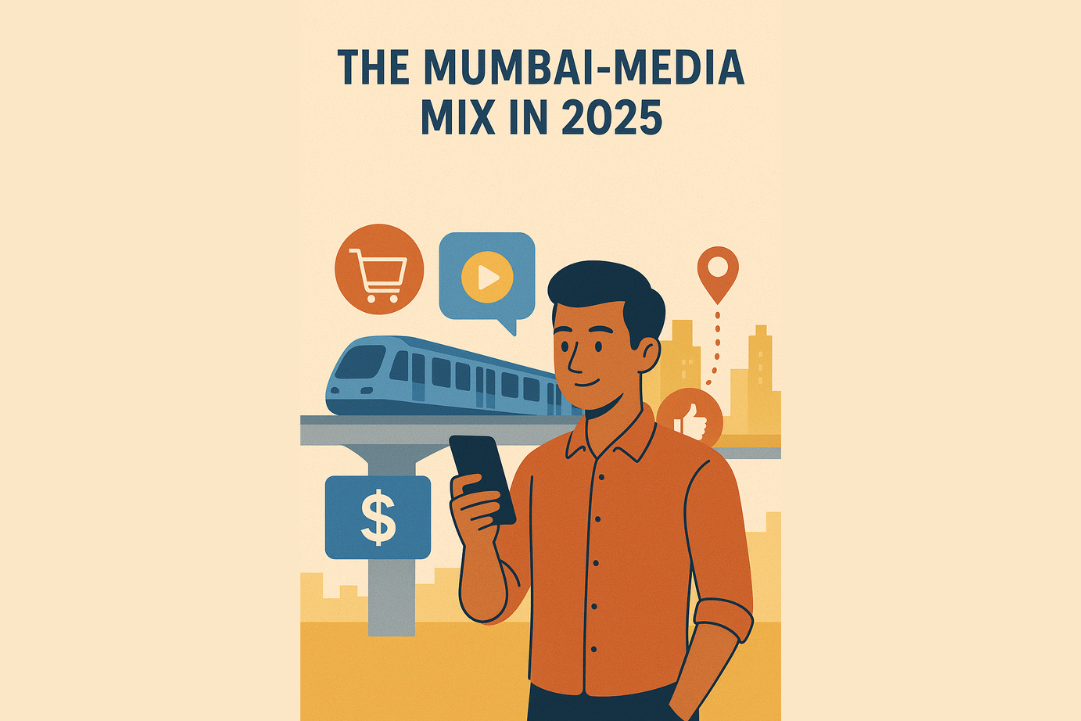
The Mumbai-Media Mix in 2025: How Metro Consumer Behaviour Should Change Your Digital Ad Allocation
- Posted by : Anvis Digital
- Business
TO : Marketing Leaders & Decision-Makers
FROM : Anvis Digital, Your Mumbai-Based Strategy Partner
RE : Strategic Reallocation for the 2025 Metro Consumer
DATE : Looking Ahead
Executive Summary:
The Mumbai consumer of 2025 is not just a demographic; they are a behavioural archetype shaped by hyper-connectivity, urban infrastructure like the expanding metro, and content saturation.
Traditional digital ad-spray strategies are becoming obsolete. Success will belong to brands that reallocate budgets from interruptive channels to integrated, contextual, and value-driven experiences.
This briefing outlines the three core behavioural shifts and the corresponding strategic budget reallocation required to win.
Shift 1: The Commute-as-Platform: From Interruption to Integration
The Behaviour : The Mumbai metro network is no longer just transit; it’s a mobile, captive, content-consumption platform. The 2025 commuter, seamlessly switching between high-speed station Wi-Fi and their 5G data, experiences a fluid journey.
They are not just “commuting”; they are in a state of “continuous discovery,” scrolling through Instagram Reels, watching YouTube shorts, and listening to podcasts, all while physically moving across the city.
The Implication : Your ad is no longer competing with other brands alone; it’s competing with the entire internet and the physical world outside the metro window. A standard banner ad is invisible.
The Reallocation Recommendation:
- DEFUND: Static display ads on general news sites.
- REALLOCATE TO:
- Vertical Video & Audio-First Content : Heavy investment in platform-native content for Instagram Reels, YouTube Shorts, and Spotify/ podcast ads. The creative must be captivating within the first 1.5 seconds and work with the sound on or off.
- Hyper-Local Geo-Fencing : Deploy budget to serve targeted ads to users within or near metro stations, directing them to nearby stores, lunch deals, or evening events. The call-to-action must be immediate and location-relevant (“Stop by our Lower Parel outlet before 7 PM and show this ad for 20% off”).
Shift 2: The Trust Deficit: From Blast to Niche
The Behaviour : The Mumbai metro consumer is digitally native and suffers from advertisement fatigue. They have developed a sophisticated “ad-blindness” and a deep distrust of broad, generic claims from large, faceless brands.
Their trust has migrated to micro-communities and creators who speak their specific language and share their niche passions—be it veganism in Bandra, indie music in Andheri, or sustainable fashion in SoBo.
The Implication : A mass-market message on a large platform has diminishing returns. Authenticity and relevance now trump sheer reach.
The Reallocation Recommendation:
- DEFUND : A significant portion of your broad-reach, high-CPM (Cost-Per-Thousand) brand awareness campaigns on global platforms.
- REALLOCATE TO:
- Micro & Nano-Influencer Partnerships : Allocate budget to a portfolio of local Mumbai creators with highly engaged, niche followings. A food review from a trusted Colaba food blogger holds more weight than a celebrity endorsement.
- Community-Driven Content & Advertising : Invest in creating content for specific communities (e.g., LinkedIn ads targeted at professionals in BKC, or Facebook Group sponsorships for parent communities in Ghatkopar). Participate in the conversation; don’t just interrupt it.
Shift 3: The Demand for Seamless Commerce: From Clicks to Instant Gratification
The Behaviour : Patience is a vanished virtue. The 2025 consumer, accustomed to one-click UPI payments and 10-minute grocery deliveries, expects a frictionless path from discovery to purchase.
Any friction—a slow-loading website, a mandatory sign-up form, a confusing checkout—is an immediate deal-breaker. The line between inspiration and transaction has dissolved.
The Implication : Your ad must be a direct gateway to a transaction, not a detour to a homepage.
The Reallocation Recommendation:
- DEFUND : Generic traffic-generation campaigns that lead to a non-optimized landing page.
- REALLOCATE TO:
- Performance Max & Shoppable Ads : Leverage AI-driven campaigns that automatically serve your product inventory across Google’s network (Search, YouTube, Gmail) to the most likely converters. Simultaneously, maximize budget for shoppable posts on Instagram and Facebook.
- Conversational Commerce & Chatbots : Invest in click-to-WhatsApp ads. A user sees an ad, clicks a “Send on WhatsApp” button, and initiates a conversation with a chatbot (or human agent) to ask questions, customize an order, and pay via a payment link—all within the app they use daily. This is the new storefront.
The Anvis Digital Action Plan for 2025
The Mumbai media mix is no longer a simple pie chart. It’s a dynamic, interconnected ecosystem. To adapt, your budget allocation must be as agile and intelligent as the consumer you’re trying to reach.
Your 2025 Mumbai Media Mix should prioritize:
- Contextual Integration (40% of budget) : Video, audio, and hyper-local ads that fit into the user’s journey.
- Niche & Community Building (35% of budget) : Influencer marketing and community-focused content that builds authentic trust.
- Frictionless Conversion (25% of budget) : Direct-response formats like Performance Max and Conversational Commerce that shorten the path to purchase.
The goal is to stop advertising at Mumbaikars and start integrating with their digital-physical urban lives.
- Tags :
- Design


